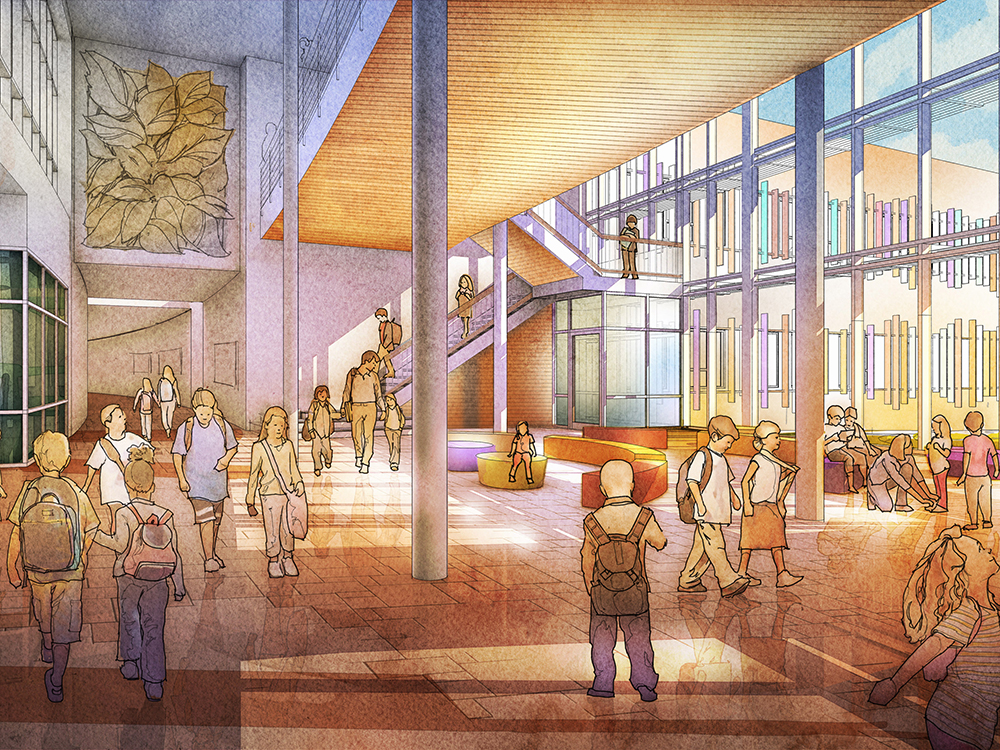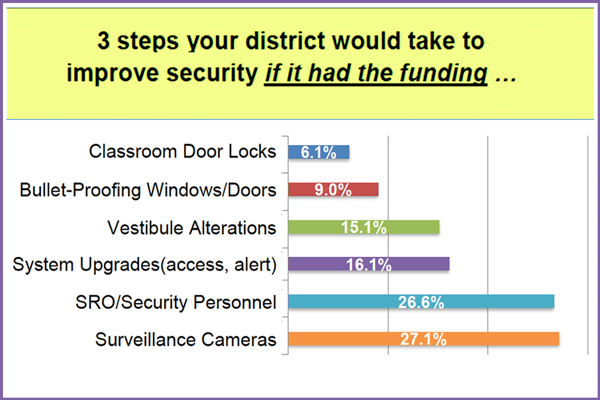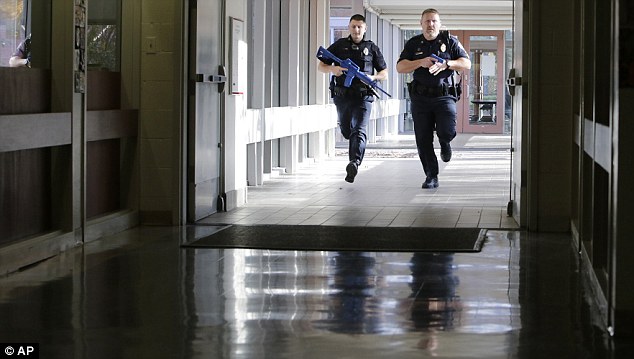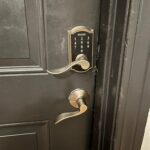The New Sandy Hook Elementary School is All About Invisible Security – Wired
The new entrance is crucial, because it promotes a feeling of comfort. Once visitors reach the school grounds, they pass through still more strategic, yet invisible, security measures. After Sandy Hook, school districts around the country began focusing intently on security systems like fences, guards, and shatterproof glass at entries. The new Sandy Hook will have impact-resistant windows and an intercom screening systems for visitors, but Brotman and the architects also found ways to make nature and landscaping work in their favor. For instance, to reach the entrance, visitors must cross one of three bridges that connect the front doors to the parking lots. To avoid the feeling of a fortress protected by a moat, the architects are turning those bridges into rain gardens that collect and filter runoff rainwater. They’ll be an educational tool, rather than just a security checkpoint.
********************
NJ High School Tries Hi-Tech Pilot Program To Improve Safety, Security – CBS NY
As CBS 2′s Scott Rapoport reported, what some are calling a big, new innovation in high school security is only about the size of a matchbox and weighs just 2 ounces.
But for the 95-person staff at Bergen County Technical High School in Paramus now wearing the wireless devices — walkie-talkies of sorts — it is a game changer in the quest to keep students and staff safe in the event of an emergency.
“It’s instant access to security,” said Andrea Sheridan.
With a push of a button, the device lets the staff talk directly with the school’s in-house personnel and alert authorities if there is trouble, Rapoport reported.
Tap the button twice and the message goes directly to the school’s administrators and campus security officer who can immediately respond to you. Location software in the device lets security in the school know exactly where the call for help came from.
********************
How School Security Has Changed Since Columbine, And How It’s Stayed The Same – KPLU
Though school security experts say keeping intruders and weapons out of schools remains an important objective, safety consultants are beginning to advocate for even more proactive training for staff and students. Better planning, they say, can not only help students and staff respond to on-campus shootings, but foster a school climate that has a better chance of preventing the shootings in the first place.
“Whenever you look at dealing with school crime prevention, you have to look not only hardware, but software — the people side, the networking, the communications side,” said Ronald Stephens, executive director of the National School Safety Center.
********************
Fine Print: School Security Report Shows Increased Protections, Higher Costs – NJ Spotlight
What it is: The New Jersey School Boards Association yesterday released the final report of its task force on school security, titled “What Makes Schools Safe.”
Hardening schools: The report lays out a lengthy list of options concerning architectural and technological changes, including building secure vestibules at the entrance of schools and adding secure locks on schools doors, both external and to individual classrooms.
The costs: Cost is a barrier for a large number of surveyed schools, and the report lists the individual price tags of a variety of technological and architectural measures.
Bulletproof glass — $300 per square foot
Classroom door locks — $350 per door
Door contacts/entry buzzers — $2,000 per door, plus software.
Entryway redesign — $50,000 to $100,000.
Identification badges — $1,000 or less.
Metal-detecting handheld wands — $250 to $1,000 per unit.
Surveillance cameras — $2,500 per unit (from $150,000 to $250,000 for a complete system)
Low-cost measure: Among the recommendations is the use of a clear “ballistic film” to coat windows at key entry points to prevent glass from shattering. “A shatterproof shield, which would prevent the type of entry that took place in Newtown, would cost approximately $10 to $16 per square foot installed,” the report read.
********************
Twenty years ago today: Gunman opens fire at Wickliffe Middle school, killing one and wounding four – Cleveland.com
A mentally ill former student barged into Wickliffe Middle School with a shotgun 20 years ago today and shot four people, killing one of them.
Over three minutes and 34 seconds, gunman Keith Ledeger – who has since died in prison – fired 10 shots.
School staff hid under desks as he shot. Assistant principal James Anderson, hit twice, fled out his office window. Gym teacher Lowell Grimm, shot and seriously wounded, escaped out a back door and collapsed outside the school. Wickliffe police officer Thomas Schmidt was shot in the hallways before officer Leonard Nosse Jr. shot and subdued the shooter.
********************
State urges better security at schools, but funds scarce – Boston Globe
In Norwood, unsecured doors at the former high school have been transformed into a controlled-access system, with a secure-entry vestibule from which visitors must be buzzed into the main building. Entry doors lock automatically, based on the time of day, and the school has more than 100 security cameras.
Usevich said classrooms are equipped with hidden “intrusion keys” so teachers can lock doors from the inside during an emergency. Students who have senior privileges, who once ate lunch outside, now eat in an open-air courtyard in the center of the building, eliminating a weak point in the armor.
“I don’t think any school, any community, any venue, is immune,” he said.
********************
School tests new active shooter detection system that warns teachers if a gunman enters the building – Daily Mail
A simulated school shooting in Massachusetts showed what ‘active shooter’ technology could do to help police catch a gunman if the horrific threat ever strikes.
In the live demonstration, the ‘gunman’ entered the school armed with an assault rifle, opening fire with dummy rounds first in the school library and then rampaging through hallways and classrooms.
But he had only a few minutes to wreak havoc.
Smoke alarm-sized sensors installed in classrooms, hallways and other points throughout the building were activated by the sounds of gunfire, and police officers were immediately able to track his movements and quickly subdue him.
You need to login or register to bookmark/favorite this content.








Leave A Comment